|
Listen to this post
|
Friday, September 16, 2022. We have now been traveling for a week. I find this hard to believe having experienced so much already. This has been the “trip of a lifetime” already. I feel so fortunate to have experienced many such trips over my life so far. I feel very lucky to have seen to much of our planet.
Took another photo from the bow of the ship this morning (roughly 6:30 a.m.). Breakfast was at 7:30. Then we visited the Hidden Falls Fish Hatchery in Kasnyku Bay (on Baranof Island). Doug (one of the guides and a bear expert) lead this excursion. During the skiff ride, I learned that pine sawflies are having an effect on many of the trees here. The trees are being weakened by changes in the climate and the sawflies are causing much more damage than in the past.
We saw 24 bears (all in the wild) at the salmon hatchery. They were feeding on the salmon returning to their spawning grounds. 24 bears in 2 hours. Impressive. All brown bears. The bears mostly eat the females (eggs and brains). Also learned each female salmon has roughly 40,000 roe (eggs).
Of course, the bears weren’t the only animals interested in the returning salmon. Pinnipeds (harbor seals and sea lions) and otters were watching us as well.
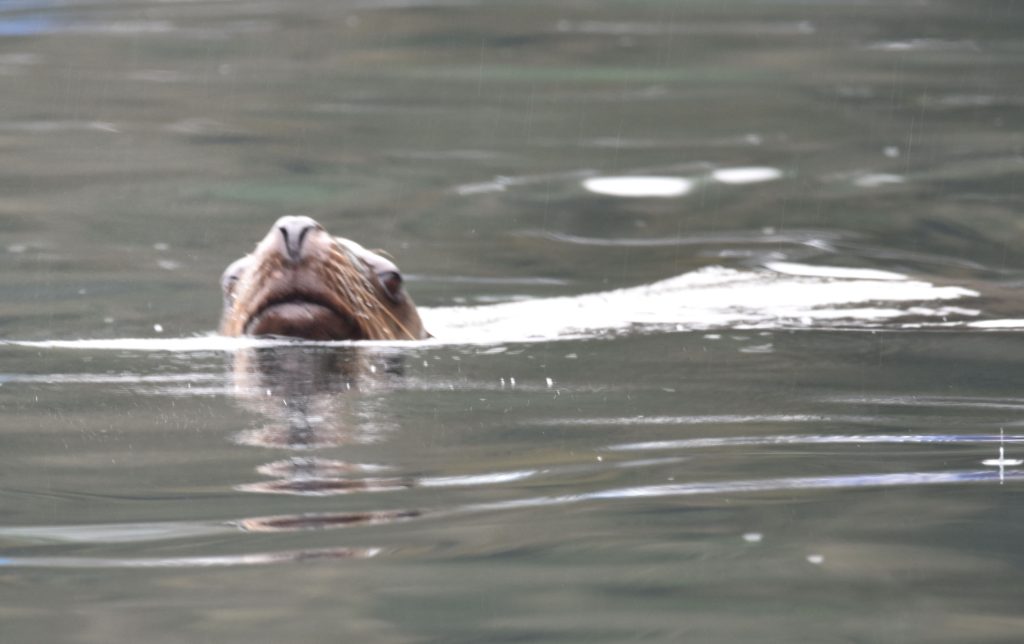
During our tour, I asked Doug if bears are affected by paralytic shellfish poisoning. Remember we transited Peril Strait (named for the many who died of this after eating blue mussels). Bears do not seem to be affected. Since all fish and game departments track most bears these days, they would know if some died due to this.
Here are a few photos from our time at the fish hatchery. It was impressive to watch so many bears in such close proximity. Lucky for us, they were more interested in the salmon than the humans.
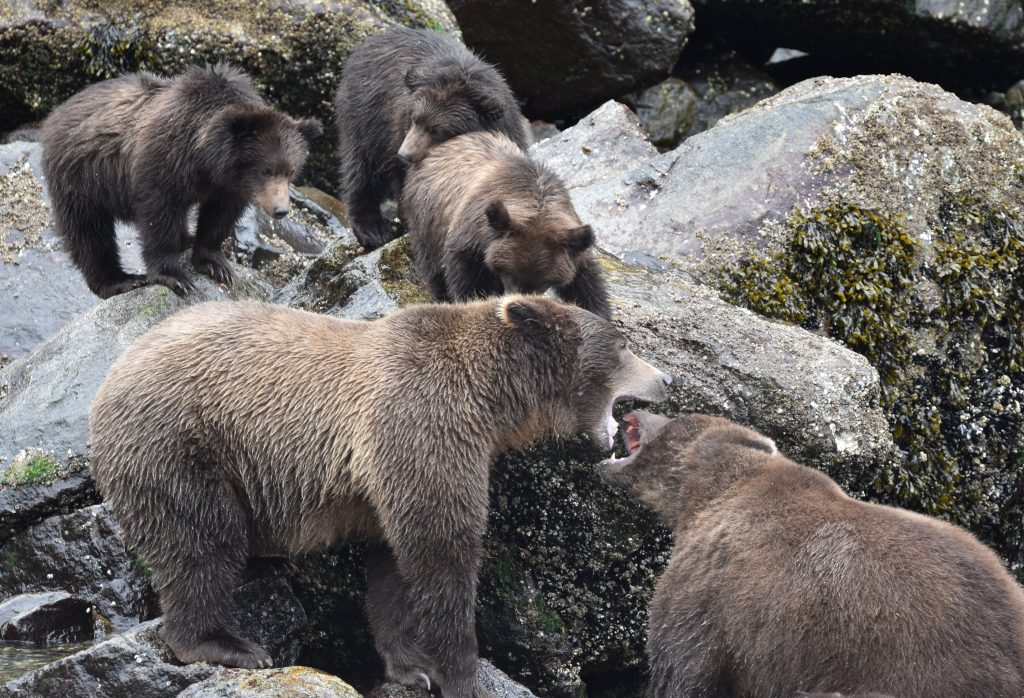
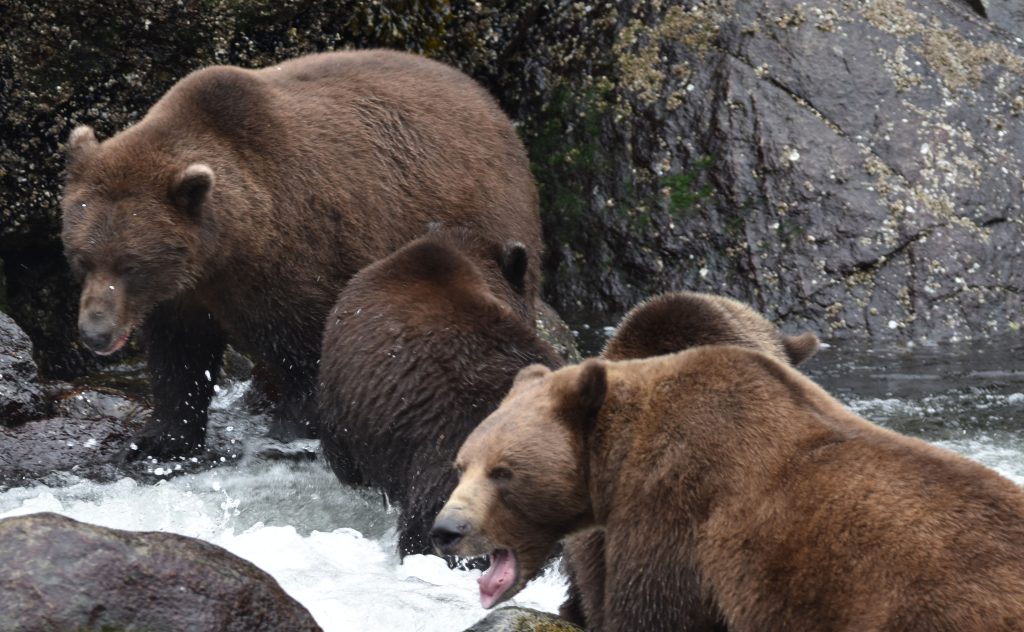
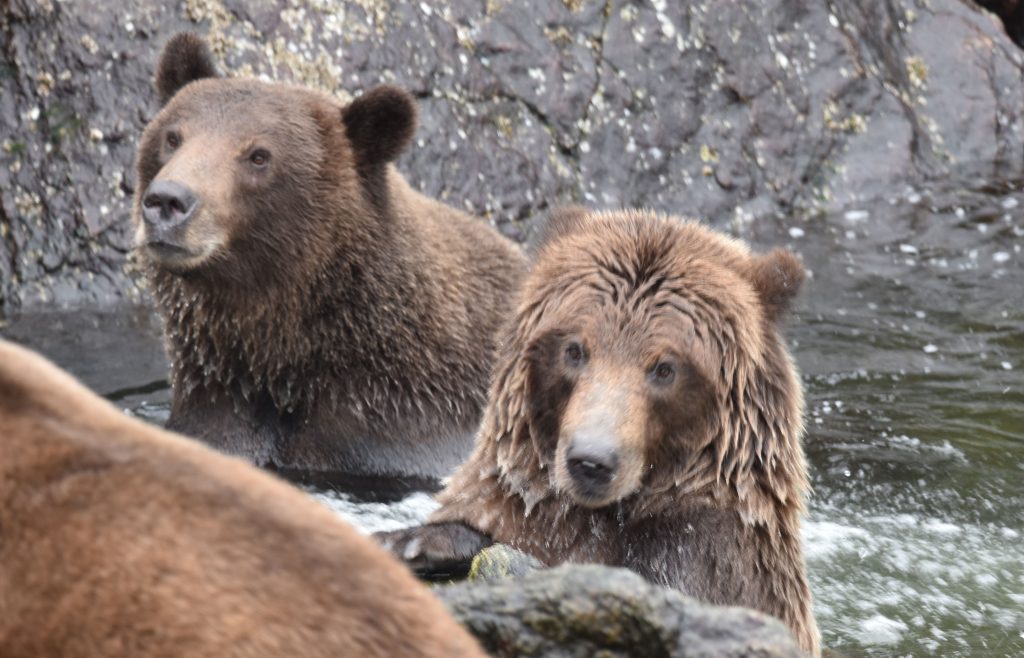
Of course, it is not all “fun and games” for this large predator. Note the roughly 2.5 feet of tapeworm extending from this bear.
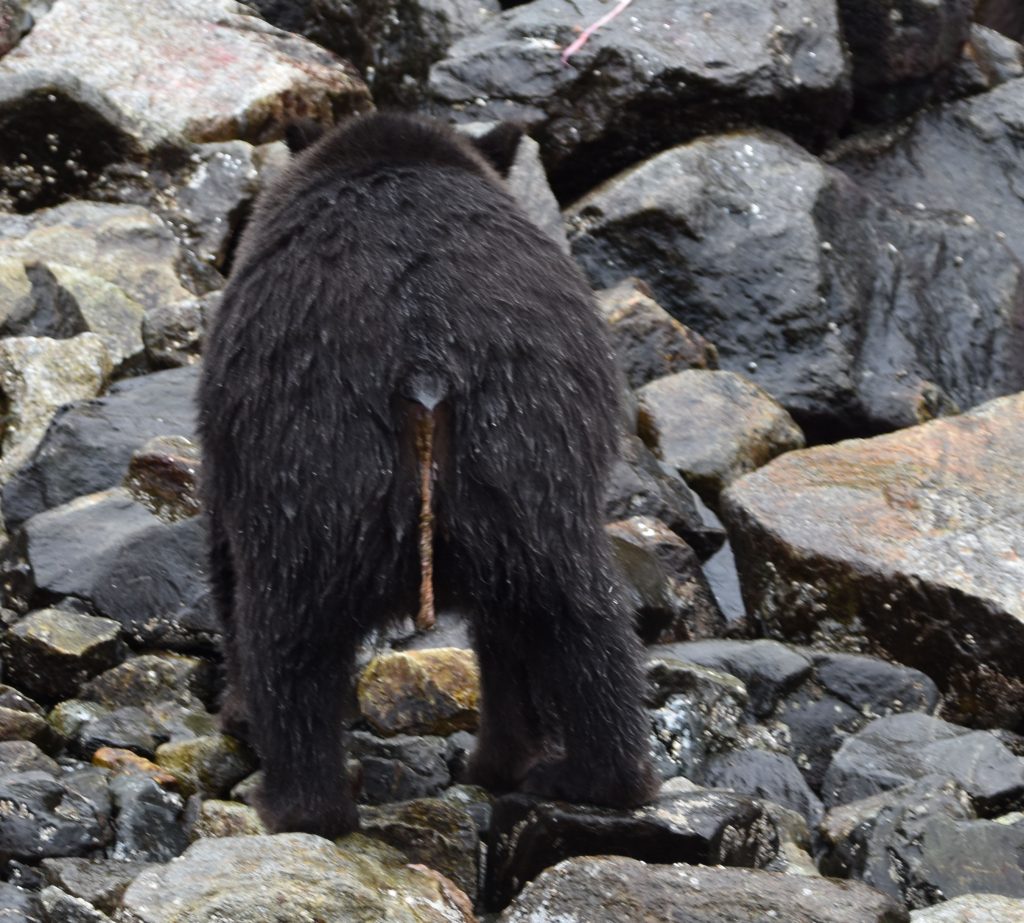
We returned to the ship and had lunch about 12:30. This was our view during lunch. I don’t think it is possible to take a “bad” photo in Alaska.
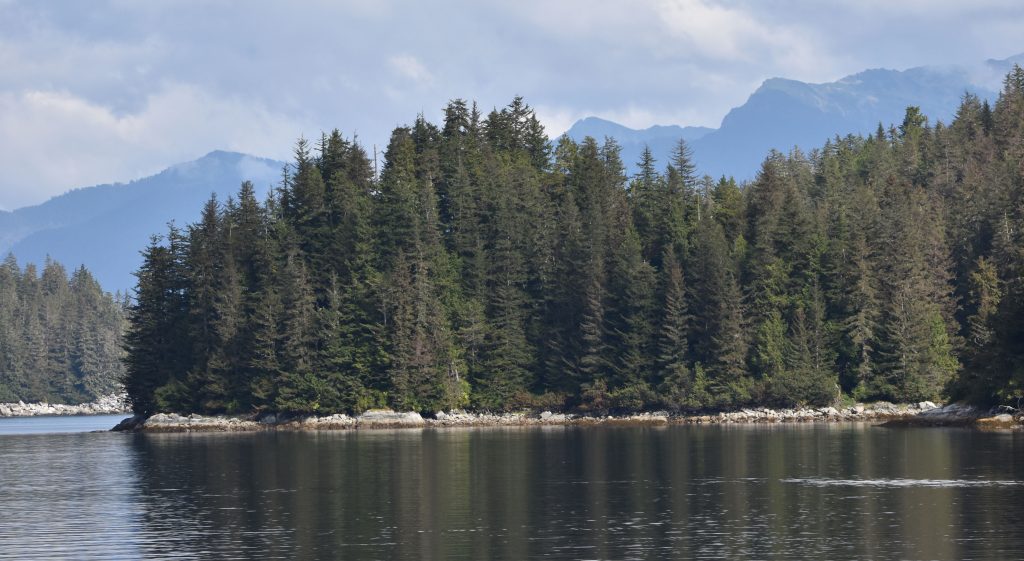
We then traveled to another bay and saw a few orcas along the way. I have better photos to share on a subsequent day. The crew practiced a safety drill (fire in the laundry room). Guests were told to ignore the drill.
After lunch we went to Takatz Bay. John (another guide) lead an “eco meander” that turned into a bush whacking experience. OK, “bush light.” We were meandering from 3 – 5 p.m. We followed a bear trail up to a beaver pond. Had some blueberries along the way. Also saw multiple banana slugs. Many dead trees – yellow cedar – they don’t get enough snow pack in winter here anymore. This has been going on for roughly 40 years now., The Arctic is warming much faster than temperate regions. Also saw tree bark peeled off by Tlingit a long time ago. Saw evidence of tool marks – stone tools. Also saw beaver chew marks on a tree. Followed the trail up to a beaver pond. Probably started as glacial kettle lake, and beaver expanded upon that lake. Walked on beaver dam and it held us all. Saw a golden eye duck in middle of the beaver pond.
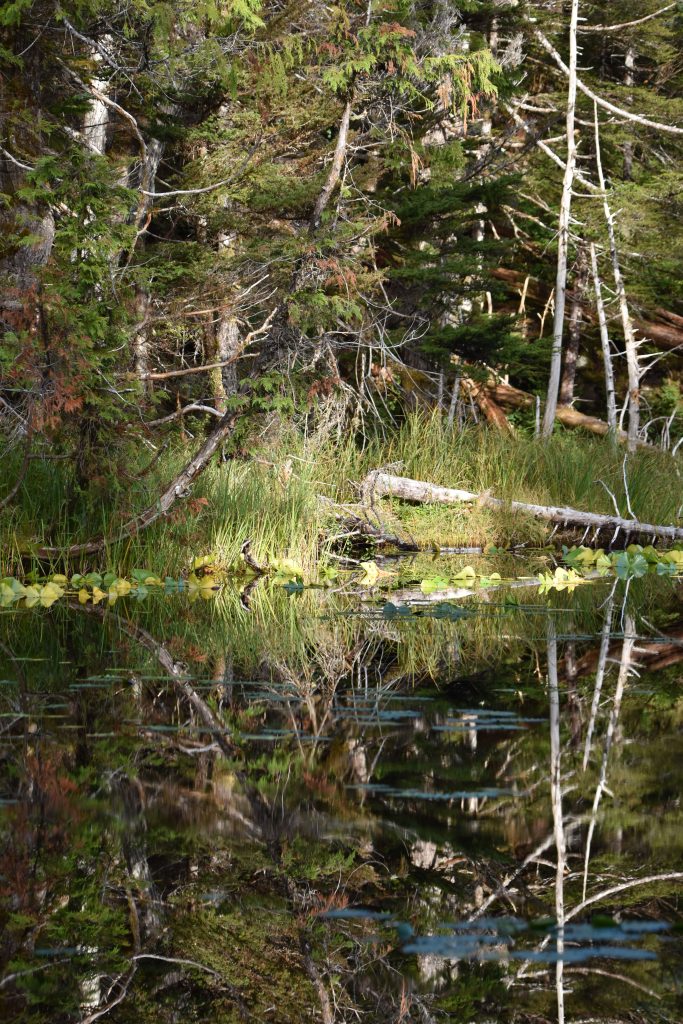
This was the best photo I have of the duck. We were quite a distance away (and it was shaded in the forest).
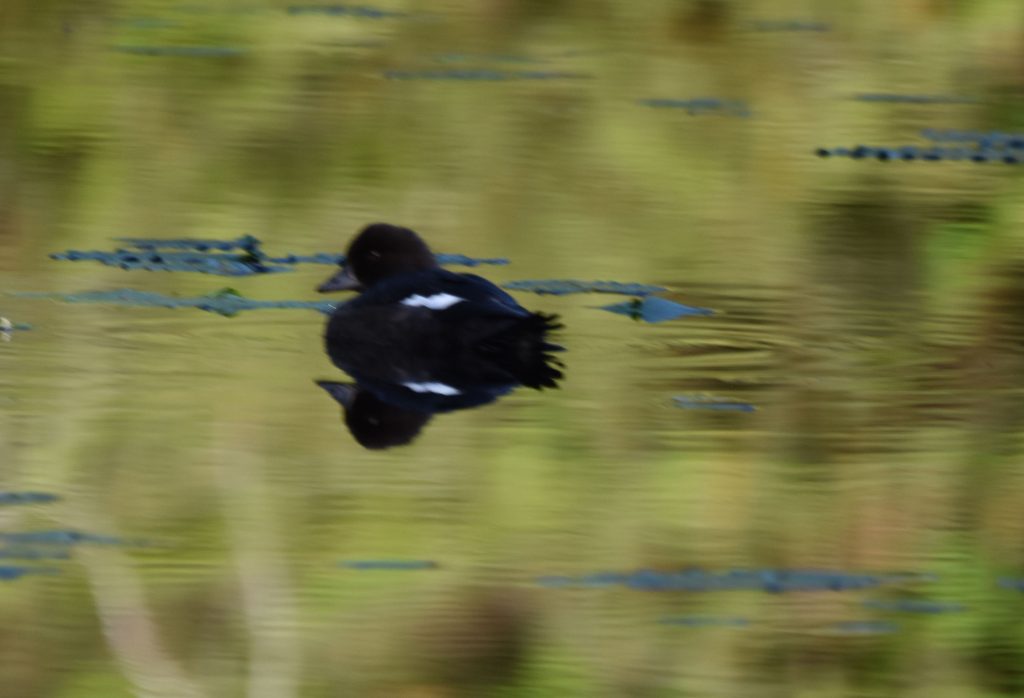
We returned to the ship and had salmon poke for cocktail hour (in honor of all the bears we saw today). We signed up for the intermediate Cascade Falls tour tomorrow. Later tomorrow, we will pass through Wrangle Strait at the start of the Alaska Marine Highway.
In the evening Jess (another guide) talked about sharks. They have a wide range of preferred prey. This means they have to know how to hunt different species of animals. They can identify members of various species. They can smell a couple hundred meters. They use stereo sniffing. Hammerhead sharks are very good at this.
Sharks prefer copper based blood and humans have iron based blood. There were 137 human shark incidents in 2021. Of these, 5 were fatal for humans. Humans kills 150 million sharks each year (mostly for shark fin soup). Sharks keep the ocean clean by eating the sick and dying animals. They churn the ocean nutrients – they dive deep and feed, then poop near the surface. They are apex predators. They eat the primary consumers. If sharks are gone, sea grass, corals disappear as well since they have more primary consumers. This also means more carbon is released into the atmosphere.
Humans over fish prey of sharks. Also sharks are caught as bi-catch (accidental). Shark fin soup as well. Things that have shark in it include fast food, cosmetics, fertilizer, makeup, wallets and much more. If product contains squalene or chondroitin it is likely containing shark or shark byproduct. Squalene is shark liver. Popeye’s fish filet, grayfish, rock salmon are shark. Alaska has 3 species of shark – Pacific Spiny Dogfish – lives up to 100 years and hunts in groups. Pacific sleeper shark (live in deep water), Salmon Shark. Jess has not seen any of these in natural waters here.
Jess gave a very informative presentation. It has been another fantastic day in south east Alaska. Tomorrow – Cascade Falls.


